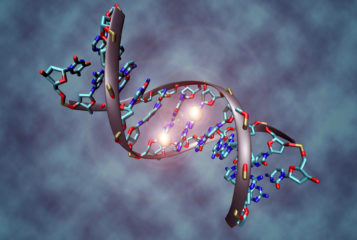Polygenic scores used to predict type 2 diabetes outcome in largest study to date
New genetic markers that drive the development of type 2 diabetes and other vascular diseases have been identified...
Dr Charlott Repschlager is a Volunteer Writer at BioNews and works as a Medical Manager in Berlin. She has completed a PhD at King's College London Institute of Psychiatry, Psychology & Neuroscience. Previously, she has worked as a postdoctoral researcher in cancer at Queen Mary University of London and as a science communications officer. She has studied Human and Medical Science at the University of Westminster.

New genetic markers that drive the development of type 2 diabetes and other vascular diseases have been identified...

Researchers have found that counselling before or after taking a genetic test to assess the risk of developing ovarian or breast cancer does not reduce distress, anxiety or depression...

Depression may directly cause an increased risk of developing type 2 diabetes, with scientists identifying seven genetic variants that are involved in both diseases...

Researchers have identified four new breast-cancer-associated genes that have the potential to help improve clinical screening for women at risk...

UK individuals with lighter skin tones are at a higher risk of developing the most prevalent type of skin cancer, due to the absence of protective genetic variants that shield them from UV damage...

UV lamps used to dry nail polish, also known as shellac or gel manicures, can cause harm to human cells, including DNA damage and mutations associated with skin cancers...

Whole genome sequencing will be used to detect rare genetic conditions in 100,000 newborns in a study run by Genomics England and the NHS...

Three million people in England are being invited by letter to join the Our Future Health study, which will explore potential uses of genetic risk scores by analysing genomic data and NHS health records...

Researchers have developed a simple test that could be used to screen women with suspected endometrial cancer and reduce the need for more invasive diagnostic methods...

A gene has been identified in mice that allows the differentiation of inner cochlear hair cells in the ear from outer cochlear hair cells...
BioNews, published by the Progress Educational Trust (PET), provides news and comment on genetics, assisted conception, embryo/stem cell research and related areas.

